The planting method of purple jasmine-the propagation method of purple jasmine
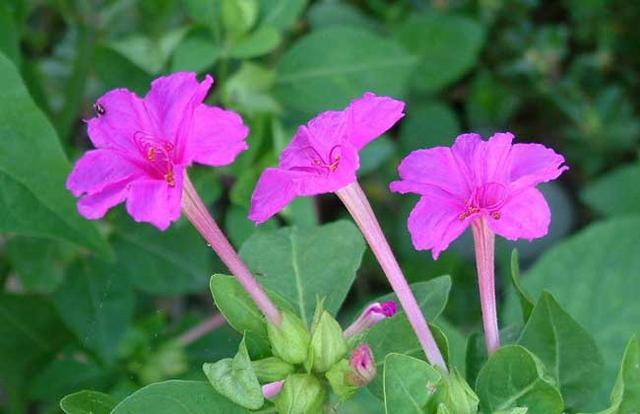
Purple jasmine, also known as rouge flower, pink bean flower, wild clove, primordial flower, etc., is an annual herb of the purple jasmine family, native to tropical America. Often cultivated in the north and south of our country, for ornamental flowers, sometimes wild, roots and leaves can be used medicinally, with the effects of heat-clearing and detoxification, promoting blood circulation, regulating menstruation and nourishing. Let's take a look at the planting method of purple jasmine.
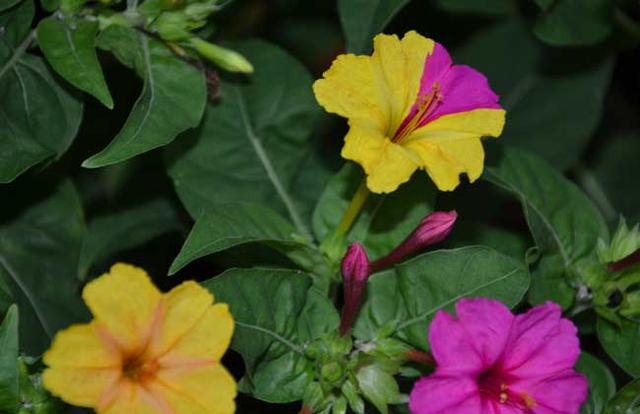
Growth habits of purple jasmine
Purple jasmine likes mild and humid climatic conditions, is not cold-resistant, and dies above ground in winter. It can safely survive the winter in the underground part of the south of the Yangtze River and become perennial grass flowers, and new plants will continue to grow next spring. Open-field cultivation requires deep, loose and fertile loam. Pot cultivation can use general flower culture soil, and grow better in slightly shaded places. Flowers bloom from evening to early morning, close in strong light, grow and blossom well if there is shade in summer, and defoliation often occurs in the scorching sun. Like good ventilation environment, summer has the effect of mosquito repellent.
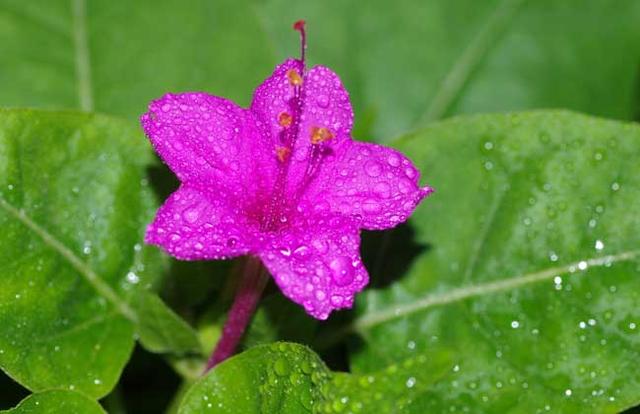
The Propagation method of Mirabilis
1. Sowing: purple jasmine is propagated with seeds, and it is appropriate to sow and raise seedlings from March to April. When the seedlings grow 2-4 leaves, the plant distance is 50-80 cm. Pay attention to shading after transplantation. Purple jasmine management is extensive, easy to grow, pay attention to proper fertilization, watering. Purple jasmine is a wind-pollinated flower, and different varieties are easy to hybridize. In order to maintain the characteristics of the variety, it should be cultivated in isolation.
2. Cuttage: foot buds, terminal buds and axillary buds can be used as cuttings for cutting propagation of purple jasmine, in which foot buds have the strongest growth potential, species are not easy to degenerate, and strong disease resistance, sand, slag and garden soil are used as substrates. After cutting, the temperature was controlled for about 20 ℃, and it could take root in 10 days. After rooting, it was transferred to a container to cultivate seedlings.
3. Root tuber: the old tuber root of Mirabilis can be propagated and used repeatedly for 3 ~ 5 years, and the species will decline gradually after the second year. In the south of the Yangtze River, the root tuber can safely survive the winter and become bulb flowers. In the area where it can not overwinter, the plant can be cut off from 3cm to 5cm on the ground after frost, and the root tuber can be dug out. When the skin is dried, it is placed in a dry place without direct sunlight, and the winter is not watered, the temperature is controlled at about 10 ℃, and the new plant is sent out again after planting in the following year.
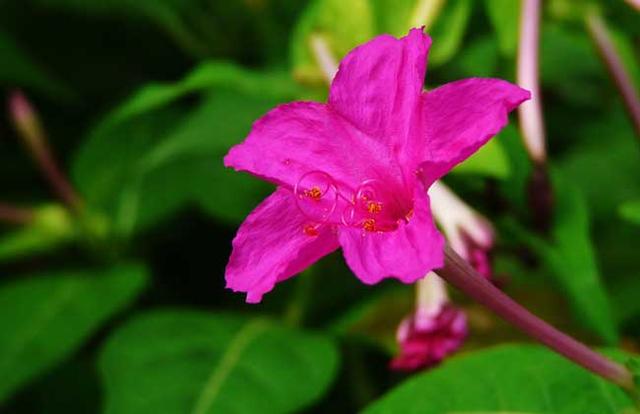
Planting method of purple jasmine
1. Soil: purple jasmine family potted soil can choose fertile sandy and semi-sandy soil. When planted in slightly acidic soil with pH 6 to 6.5, the root system is dense and the growth is vigorous, such as heavy clay, lack of matrix, low fertility and poor ventilation. The root system is less, the plant is short, the stem and leaf is slender, and the flowers are small.
2. Watering: purple jasmine is not resistant to drought, but avoid stagnant water. In rainy season, it is necessary to dump stagnant water in the basin in time, otherwise the leaves are easy to turn yellow. In summer, hot and sunny days should be watered twice a day, once in the morning and evening, if the leaves are found to curl and droop should be sprayed on the leaves to promote growth, the rainy season should often loosen the soil, so that there is no water in the basin. Water is watered every few days in spring and autumn. Winter should keep the basin soil moist, too much watering, the roots will be black and rotten, leaves withered and yellow, shedding.
3. Illumination: purple jasmine is a light-loving plant, its growth and development need sufficient light, and long-day direct light is more beneficial to its growth and development. Strong light, thick green leaves, stout branches, many buds, good coloring and high aroma. If the light is insufficient or too shaded, the leaves are light green, the leaves are large and thin, the photosynthetic products are reduced, the physiological activities are inhibited, the plant development is poor, the yield of flowers is low and the quality is poor.
4. Temperature: purple jasmine is sensitive to temperature, which requires warm, hot and humid climate, and can adapt to higher air temperature, can not bear low temperature, and has poor cold resistance. When the temperature is below 10 ℃, the growth is extremely slow, or even stops growing. The buds can sprout at about 19 ℃, and the buds can only be conceived at more than 25 ℃. The buds form and develop well at 30-40 ℃. The suitable temperature for maturation and opening is 32-38 ℃.
5. Fertilization: the high temperature season in midsummer is the peak period for the growth of purple jasmine, applying more organic fertilizer and phosphorus and potassium fertilizer, such as peanut cake powder, bone powder, calcium superphosphate and multi-element flower fertilizer, twice a month. Purple jasmine often has luxuriant branches and leaves but does not blossom in summer, the main reason is that too much nitrogen fertilizer is applied, resulting in the growth of branches and leaves. In such a situation, it is necessary to control fertilizer and water, increase the application of phosphorus and potassium fertilizer, and promote the gestation of flower buds. At the same time, we should pay attention to move the purple jasmine to a place with sufficient sunshine and good ventilation.
6. Diseases and insect pests: purple jasmine is often harmed by borer larvae and shell insects and red spiders, which is most serious from July to September. It often eats buds and can be sprayed with almighty powder or permethrin plus water 200 times every semimonthly, that is, no diseases and insect pests should be sprayed, so that it is appropriate to spray at 9 am and 4 pm on a sunny day, and it is not suitable to spray in the hot sun at noon to prevent drug damage.
7. Pruning: purple jasmine grows very fast in summer and should be pruned in time. Potted purple jasmine pruning to retain the base 10 cm to 15 cm promotes the growth of most sturdy new shoots. If the new shoots are growing very vigorously, they should be coring when growing 10 cm and promoting secondary shoots. The flowering is more and the plant shape is compact. After the flower withered, the flower branches should be cut off in time to reduce the consumption of nutrients, but also promote the growth of new shoots, so that the branches are dense, buds are more, and flowers are more.
- Prev
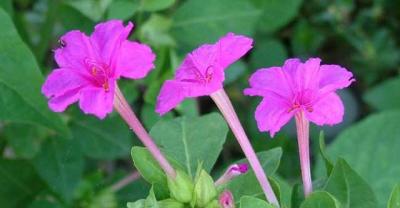
Technological innovation and the help of cooperatives sweeten the hearts of growers
Introduction: China's agriculture is booming, more and more new farmers participate, the corresponding planting technology continues to improve, the editor collects 3 new technologies and push.
- Next

The difference between porcelain teeth and Implant teeth (yarbeija Science Popularization)
Dental implants and porcelain teeth are both good ways to repair teeth, and they are also the most popular ways to repair missing teeth. Many friends are actually interested in planting.
Related
- Fuxing push coffee new agricultural production and marketing class: lack of small-scale processing plants
- Jujube rice field leisure farm deep ploughing Yilan for five years to create a space for organic food and play
- Nongyu Farm-A trial of organic papaya for brave women with advanced technology
- Four points for attention in the prevention and control of diseases and insect pests of edible fungi
- How to add nutrient solution to Edible Fungi
- Is there any good way to control edible fungus mites?
- Open Inoculation Technology of Edible Fungi
- Is there any clever way to use fertilizer for edible fungus in winter?
- What agents are used to kill the pathogens of edible fungi in the mushroom shed?
- Rapid drying of Edible Fungi

